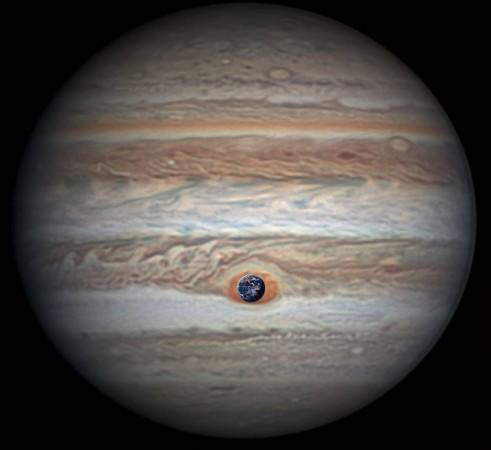
Jupiter and other gas giants might have been warm ocean planets with water vapour in their atmosphere when they were younger, a recent study has revealed.
ALSO READ: Giant void discovered in the Khufu's Great Pyramid in Giza with the help of cosmic rays
According to researcher John Chambers, some protoplanets are likely to develop into "steam worlds" from their modest beginnings as accumulations of rock and ice pebbles.
A protoplanet is a huge body of matter that orbits around a star and is believed to be developing into a planet.
It grows as the accumulating bodies come together, the rise in pressure melt the ices which form oceans.
Absence of air leads to sublimation of water and other liquids results in surrounding the atmosphere by water vapour, as per Chambers' idea.
ALSO READ: Long-term space mission impacts the brains of astronauts severely
Protoplanets that possess comparatively smaller Earth masses between 0.08 and 0.16 also have the potential to be comparatively warm -- around 0-347 degrees Celsius (32-704 degrees Fahrenheit), Chambers said.
"I calculated the structure of atmospheres in this case, and worked out when conditions are right for rapid inflow of gas to form a giant planet," Chambers was quoted by Space.com as saying.
ALSO READ: Giant cave discovered on Moon which could aid human colonisation on the lunar surface
"The answer is, this happens when a planet is a few Earth masses, which is somewhat lower than the conventional value of 10 Earth masses," he said further.
Chambers' model comprises of a planet that orbits around a Sun-like star at a distance almost thrice that of Earth and the Sun.
Protoplanets are made up of half ice and half rock in the early stages. A small protoplanet is formed by the composition of pebbles and have a very thin atmosphere made up of sublimating ices.
ALSO READ: Interstellar celestial body spotted in our solar system for the first time!
Only after a protoplanet gains 0.084 Earth masses does it attain the ability to become a tiny ocean world, as a minimum of this mass is needed to ensure sufficient atmospheric pressure for liquefying ice.
As the size of the protoplanet increases with accretion of more rock and ice, this triggers the mounting up of hydrogen and helium. Presence of water in large amounts turns the planet warmer.
The atmospheric pressure of the protoplanet keeps on increasing as it turns more massive, this allows its atmosphere to sponge up more water vapour.
This process reaches a point when the ocean of liquid is no more and mixture of a "supercritical fluid", hydrogen and helium is left behind with no clear boundary between the atmosphere and the surface, Space.com reported.
When the accretion of rock and ice is around two to five Earth masses, it kick-starts a process in which more amount of gas are rapidly picked up by the protoplanet from the disk around its parent star.
According to the new research this phenomenon leads to the creation of a gas giant.









